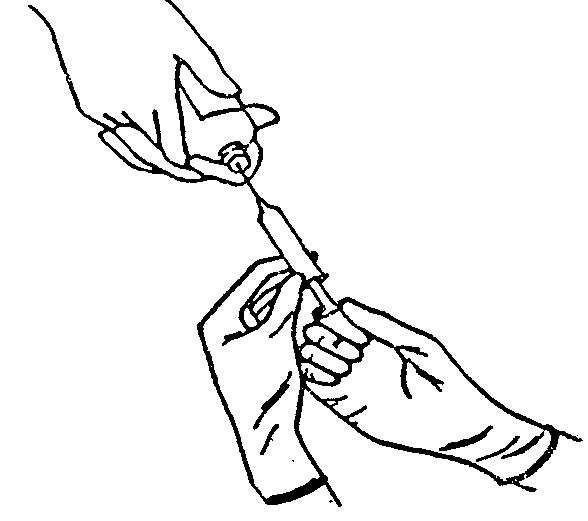Sterile Procedures
LESSON 3: Surgical Asepsis and Sterile Technique
3-7
3-7. ASSISTING WITH THE WITHDRAWAL OF STERILE SOLUTION FROM A VIAL
Some sterile liquids that are used as medications for injection come in small bottles with rubber tops. These tops can be pierced with a sterile needle in order to withdraw the sterile contents. When performing this procedure, you will be assisting a physician or other medical personnel who is wearing sterile gloves and cannot touch the outside of the vial because the vial is contaminated. You, however, will not be gloved. Follow the procedures given below.
a. Obtain a correct vial of solution. Check the bottle against the physician's orders to verify that the solution is correct (correct name, dosage, and route).
b. Clean the vial stopper with an alcohol swab.
c. Hold the vial firmly with the label up so that the person with the sterile gloved hands can verify that the solution is the proper one. The gloved person then:
(1) Pulls the plunger of the syringe to the amount of solution required.
(2) Inserts the needle through center of rubber stopper.
(3) Pushes the plunger into the syringe to increase air pressure inside vial (figure 3-10).
Figure 3-10. Withdraw sterile fluid.
(4) Pulls plunger out to somewhat more than the prescribed level.
(5) Withdraws the needle with a quick straight pull. (If the needle touches the outside of the vial, then the needle is contaminated and the entire procedure must be done again.)
d. Discard or store vial in accordance with local SOP.
NOTE: Withdrawing fluid from an ampule is accomplished in basically the same
manner.


